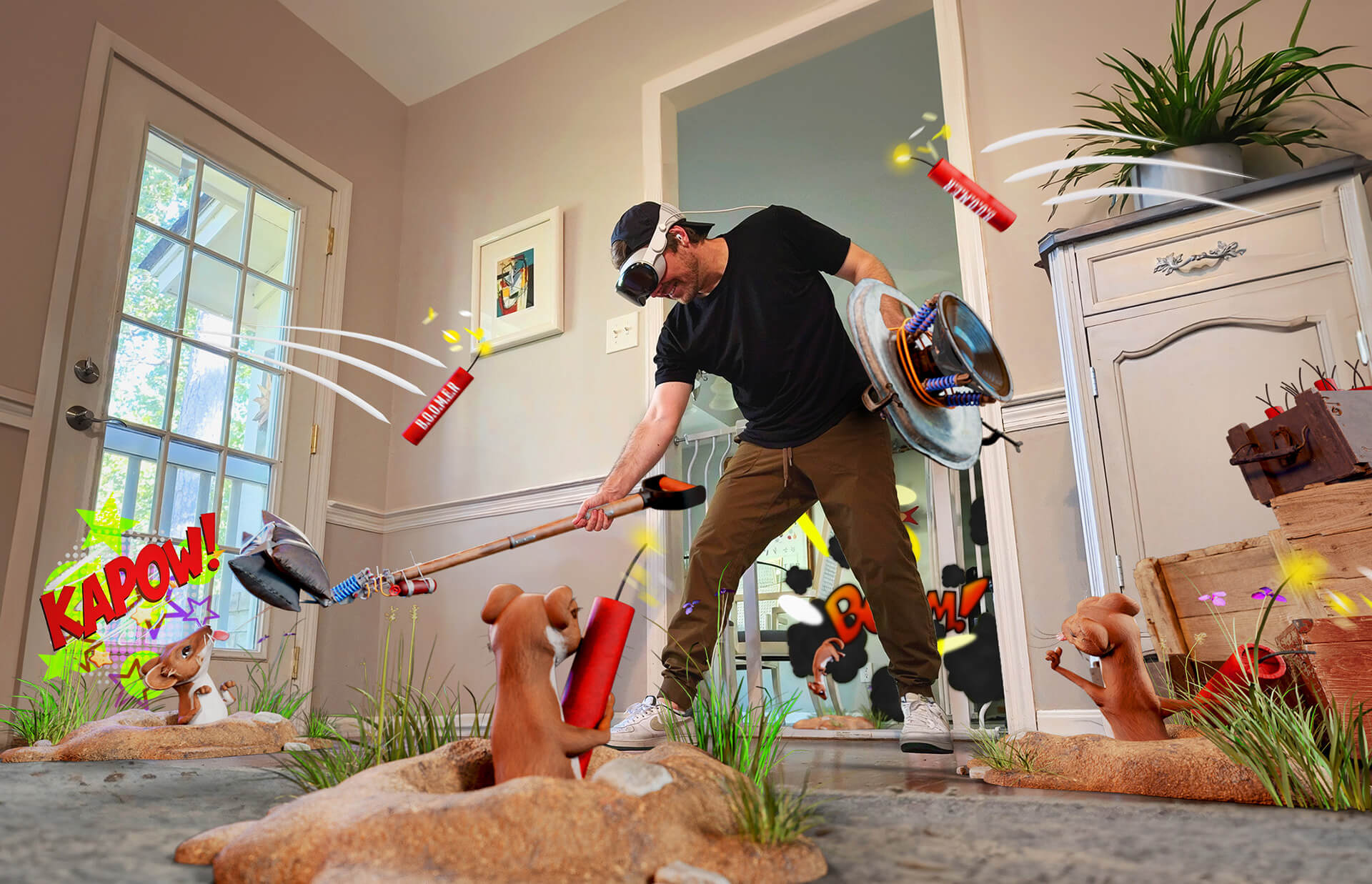“WebAR technology is going to be a game changer for marketing and AR alike,”
– Patrick Johnson, RPR CEO

Last week, Top Interactive Agencies did a deep-dive interview into the future of Augmented Reality with RPR’s CEO, Patrick Johnson. The interview covered key AR questions such as Web AR Marketing, RPR’s research methodologies, and the next big trends for Augmented Reality agencies.
We have included a few excerpts from the interview below, but you can read the full interview here.
Can you provide one or two examples of your experience in dealing with usability studies, eye-tracking study, field study, or focus groups?
Consumers have very low patience for learning new technologies before they lose attention and interest. For the past 3 years, RPR has been consulting Lenovo on their new AR Think Reality headset and software platform and developed their AR experiences that were showcased at the Augmented World Expo and CES 2020.
Creating AR content for shows poses an even greater challenge because events are high-stress environments that must move people through the demo assembly line as quickly as possible. Before developing the AR experience, we always create user profiles that help us understand the intended user of the technology, how they will use it, and what their use case is.
After validating the profiles with a sample of the intended users for validation, we refine and get to work. Once an MVP is created, we conduct recorded user testing where we observe the user while capturing user analytics on any steps that cause friction. We then interview the users using a point system to score usability and performance.
As an end result for the Lenovo demos, we developed self-guided experiences for the events that required no external support from onsite staff. This reduced the need for Lenovo staff support and allowed the greatest number of attendees to engage with the product with as little friction as possible.
Let’s chat
Not sure where to start? Book a free strategy call with us to get started! No strings attached.

Can you outline the research methodologies that give you greater insight?
Along with usability studies, we always recommend that our clients in marketing and advertising include our AR launch strategy services when deploying a new AR program. Some of these services include:
Competitor interviews— this is one of the most powerful services that we offer. We work with a company that helps us source knowledgeable stakeholders from competitive companies that have deployed comparable experiences and have insider knowledge. This helps us identify potential blind spots and ancillary opportunities before development. Ultimately, this allows us to incorporate successful solutions with proven success and steer clear of missteps on comparable AR programs.
Customer interviews – before launching a project we like to speak with the primary source (i.e our customer’s customers) to help us verify our assumptions and guide our approach. Receiving customer profiles, demographic reports, and general buying behaviors from our stakeholders is always valuable. But what we have found is equally as important is speaking directly with the customer to ask the right questions that will help us inform our development and deployment strategies. Customers are often more willing to speak freely to us about what is and isn’t working since we are a 3rd party agency and they don’t have to worry about offending us.
Customer Journey – after in-depth interviews with our clients and their customers and competitors, we develop a comprehensive customer journey map that looks across common customer touchpoints to identify where AR should be used to enhance the customer experience—from Awareness to Planning to Shopping to Loyalty.
Keep up to date
Sign up to our newsletter for exclusive updates and content, delivered directly to your inbox.
What would you say will be the next big trend in the interactive industry?
The next big trend for marketing, the interactive industry, and AR is a new technology called WebAR. This is going to be a game-changer for marketing and AR alike.
Essentially, WebAR (also known as web-based or app-less AR) allows users to initiate AR experiences through a simple hyperlink or QR code—no downloads or apps required. No friction.
Everything is launched through your mobile browser. This means that companies in Consumer Package Goods can simply add a QR code to their product packaging or physical marketing materials that prompts the user to open their camera on their phone, scan the QR code, and then launch the experience. That easy!
Or, if you’re advertising online, simply embed the clickable hyperlink into your ad or online store and users can now be directed to AR facefilters, AR games, or a product visualization experience that prompts your users to interact with your brand in exciting new ways. For more information on Web AR, read our “Everything You Need to Know About Web AR” series.
Are there any AR app or websites that are worth mentioning?
Our friends over at 8th Wall are the most robust development platform for Web AR development.
Along with RPR, I co-organize the largest AR MeetUp group in the world: AWE Nite SF. We obviously won’t be having any events until the Covid-19 storm passes, but you can attend the Augmented World Expo online. For discount passes, email me (pat@stage.rockpaperreality.com) directly and I’ll set you up.
You should also visit our friends over at Artillery Intelligence for all the latest AR analyst reports and trends. Mike Boland is the senior Analyst and your man when it comes to AR insights.
And of course, visit Rock Paper Reality’s site and contact us for a free demo or to explore how AR can impact your business today.
